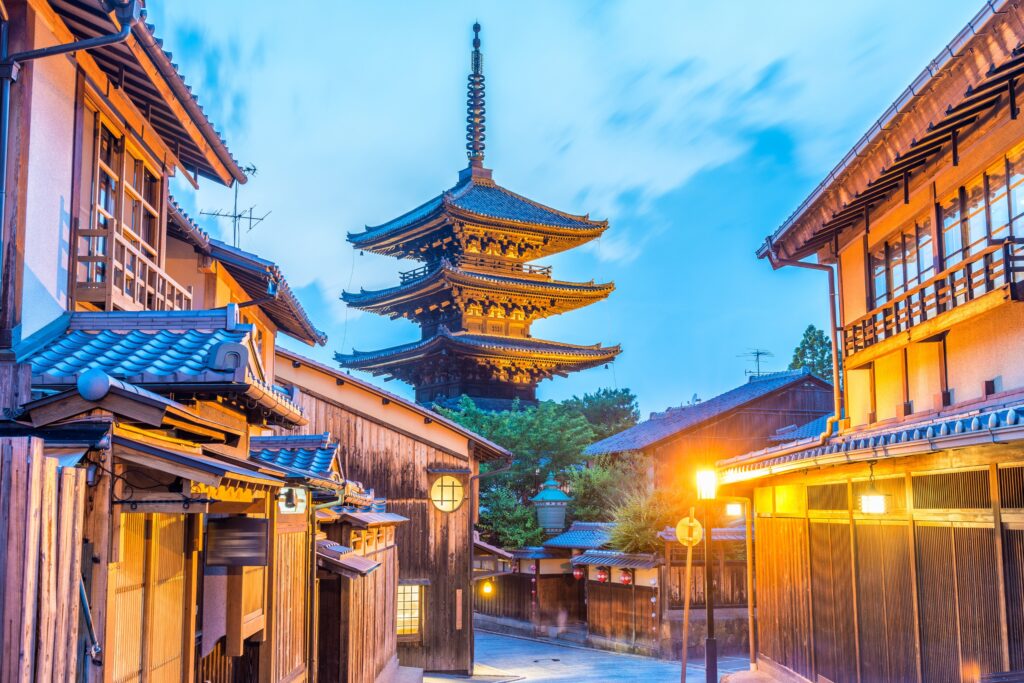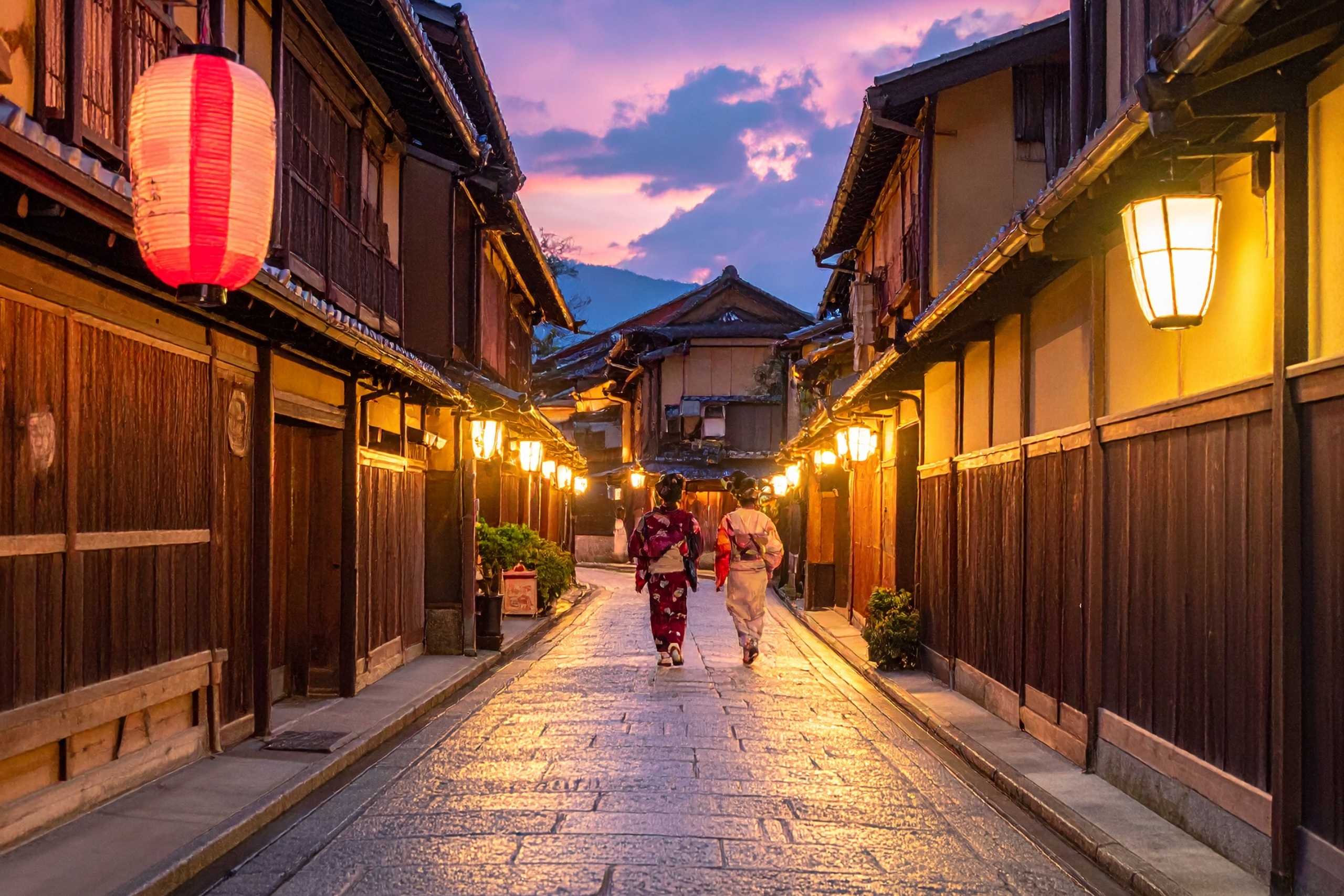Kyoto’s Gion District continues to capture the imagination of travellers worldwide, blending centuries-old tradition with a timeless atmosphere that feels remarkably preserved amid modern change. As one of Japan’s most iconic cultural centres, Gion offers visitors a rare opportunity to step into a world shaped by tea houses, wooden machiya townhouses, lantern-lit alleyways, and the enduring presence of geisha and maiko arts. Its scenery evokes a sense of nostalgia, transporting travellers to a historic era where refined performances, elegant rituals, and deep-rooted customs defined local life.
What sets Gion apart is its ability to stay culturally vibrant while remaining accessible to global visitors. From traditional dining establishments to seasonal festivals and immersive walking routes, the district offers experiences that feel both intimate and expansive. As travel preferences shift toward slower, meaningfully curated journeys, Gion remains one of the world’s top destinations for cultural discovery and authentic immersion. Its enduring allure continues to shape Kyoto’s reputation as a city where history and artistry coexist beautifully.
Gion’s Historic Streets: A Living Window Into Japan’s Cultural Heritage
Gion’s architectural charm is one of its most defining features. The district’s narrow stone-paved lanes, framed by wooden machiya, create an atmosphere that feels untouched by time. Visitors often describe walking through Gion as stepping directly into a storybook, where every corner reveals another glimpse of historic Japan. These preserved structures—many dating back to the Edo period—offer a rare sense of continuity in a world where modernization frequently replaces tradition.
Beyond aesthetics, the district’s historical significance plays a central role in its appeal. Many buildings serve as active tea houses, artisan studios, or local restaurants, ensuring that traditional crafts and practices remain woven into everyday life rather than showcased superficially. Travellers seeking authentic cultural travel experiences appreciate how Gion allows them to observe traditions not as staged performances, but as living cultural expressions that remain integral to Kyoto’s identity.
The Enduring Allure of Geisha and Maiko Culture
One of the most captivating aspects of Gion is the presence of geisha (geiko in Kyoto dialect) and maiko, who embody generations of artistry rooted in dance, music, and refined hospitality. Their traditional attire, graceful movements, and dedication to craft have fascinated visitors for centuries. These cultural custodians maintain rigorous training schedules, ensuring that historical practices remain alive and respected within the district.
While public sightings of geiko or maiko walking to evening engagements remain a highlight for many visitors, their work extends far beyond photographs. Performances, tea ceremonies, and seasonal events offer insight into a world of discipline and elegance. To preserve respect for these traditions, local initiatives encourage responsible tourism, helping travellers understand the cultural protocols associated with interactions. This balance preserves authenticity while allowing global audiences to appreciate one of Japan’s most cherished artistic traditions.
Seasonal Festivals That Bring Gion’s Traditions to Life
Gion’s festival culture plays an important role in maintaining the district’s vibrancy. The world-famous Gion Matsuri, held every July, attracts travellers who want to experience one of Japan’s most celebrated traditional events. The elaborate floats, ceremonial processions, and community rituals showcase deep-rooted customs that unite modern residents with their historical predecessors.
Seasonal transitions also shape the district’s atmosphere. Cherry blossom season brings a soft pink glow to Gion’s canals and footpaths, while autumn transforms the landscape into a tapestry of amber and crimson. These natural spectacles elevate the cultural experience, inviting visitors to engage more intimately with Kyoto’s seasonal rhythms. The combination of festivals, nature, and heritage makes Gion a uniquely immersive destination that evolves beautifully throughout the year.
Traditional Cuisine and Tea Houses That Preserve Centuries of Craftsmanship
Gion’s culinary scene is a defining part of its enduring charm. Kaiseki dining—Japan’s most refined multi-course cuisine—thrives in the district, offering meals that highlight seasonal ingredients, artistic presentation, and deep cultural symbolism. From quiet, family-run restaurants to long-established tea houses, every venue reflects a lineage of craftsmanship passed down through generations.
Travelers also enjoy exploring quieter culinary gems such as tofu-focused eateries, matcha specialty shops, and wagashi confectioners. These businesses represent more than delicious food; they preserve regional history and local identity. By participating in traditional dining experiences, visitors gain insight into the values, aesthetics, and philosophies that continue to influence Gion’s cultural heartbeat, creating memories that go far beyond typical sightseeing.
Why Modern Travellers Are Choosing Gion for Meaningful Exploration
As global travel trends shift toward intentional, experience-driven journeys, Gion aligns perfectly with what modern travellers seek—authenticity, connection, and cultural depth. Unlike destinations shaped primarily by commercial tourism, Gion offers an environment where heritage and daily life coexist naturally, allowing visitors to observe traditions without feeling detached from local communities. This sincerity has become increasingly valuable in a world where curated experiences often overshadow genuine cultural encounters.
Travellers researching meaningful destinations often rely on a trusted UK travel news source to identify places that uphold cultural integrity. Gion consistently earns recognition for offering immersive experiences grounded in respect, history, and artistry. Its ability to maintain traditional atmospheres, while accommodating the needs of international visitors, ensures it remains one of the world’s most sought-after destinations for cultural travel.

Conclusion
Kyoto’s Gion District continues to captivate travellers because it offers an extraordinary blend of authenticity, artistic heritage, and cultural depth. With its preserved wooden architecture, graceful geisha traditions, seasonal festivals, and exquisite culinary offerings, the district invites visitors to experience Japan’s cultural legacy in its most genuine form. Gion’s appeal lies not only in its historical significance but also in its ability to deliver meaningful, emotionally resonant journeys to those seeking more than typical tourist attractions. As travel trends lean toward slow exploration and immersive cultural experiences, Gion stands out as a destination that preserves the beauty of tradition while welcoming a global audience with warmth and respect. Its enduring magic ensures that it remains a top choice for travellers who want to engage deeply with history, artistry, and the timeless spirit of Kyoto.


